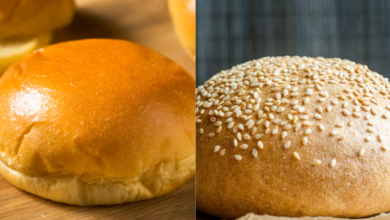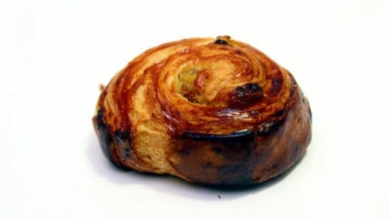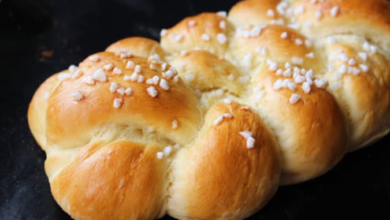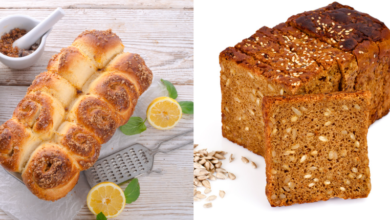What Makes Brioche So Different from Other Breads?
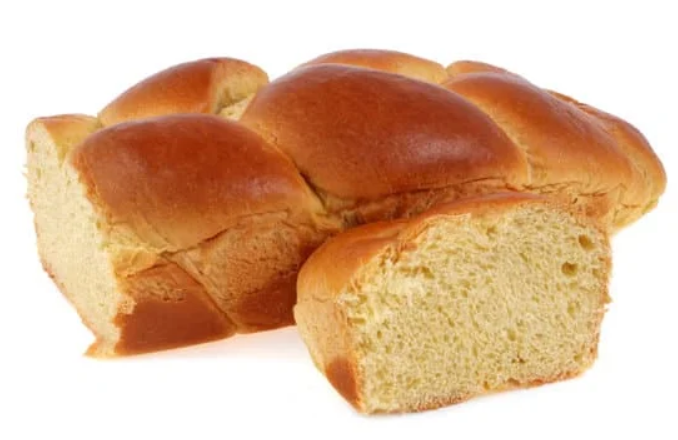
What To Know
- Unlike ordinary loaves, brioche possesses a tender, buttery crumb, a golden-brown crust, and a flavor that tantalizes the taste buds.
- It can be served as a breakfast treat with a spread of butter or jam, used as a bun for sandwiches, or transformed into decadent desserts such as French toast or bread pudding.
- Brioche is enriched with eggs and butter, resulting in a tender, moist crumb with a golden-brown crust.
Brioche, a French culinary delight, stands out from the vast world of breads with its unique characteristics that elevate it to a realm of its own. Unlike ordinary loaves, brioche possesses a tender, buttery crumb, a golden-brown crust, and a flavor that tantalizes the taste buds. But what exactly sets brioche apart from most breads? Let’s delve into the secrets that make this bread so exceptional.
The Power of Eggs
The most defining feature of brioche lies in its generous use of eggs. While most breads rely on water as their primary liquid ingredient, brioche incorporates a significant number of eggs, typically two to three per pound of flour. This high egg content results in a tender, moist crumb with a rich, golden color.
The Kiss of Butter
Another key ingredient that sets brioche apart is butter. Brioche dough is enriched with a high percentage of butter, usually around 20-30% by weight. This abundant butter content imparts a velvety texture to the crumb, creates a flaky crust, and enhances the bread’s overall flavor.
The Role of Sugar
Unlike many other breads, brioche contains a moderate amount of sugar. This sugar plays a crucial role in developing the bread’s distinctive flavor and browning characteristics. It provides nourishment for the yeast during fermentation, resulting in a slightly sweet and caramelized taste.
The Long and Slow Fermentation
Brioche dough undergoes a long and slow fermentation process that allows the flavors to develop fully. This extended fermentation gives the dough time to rise gradually, creating the characteristic airy and tender crumb. The slow fermentation also contributes to the bread’s complex flavor profile.
The Shaping and Baking
Traditionally, brioche is shaped into individual rolls or loaves with a distinctive dome-like top. This shape allows for even baking and contributes to the bread’s iconic appearance. Brioche is baked at a moderate temperature to ensure a thorough and even cooking process.
The Versatile Brioche
Brioche’s unique characteristics make it a versatile bread that can be enjoyed in various ways. It can be served as a breakfast treat with a spread of butter or jam, used as a bun for sandwiches, or transformed into decadent desserts such as French toast or bread pudding.
Conclusion: Brioche’s Culinary Legacy
Brioche, with its exceptional tenderness, buttery richness, and versatile nature, stands as a testament to the artistry of breadmaking. Its unique combination of ingredients, meticulous fermentation process, and distinctive shaping techniques have earned it a special place in the culinary world. Whether enjoyed as a simple breakfast delight or transformed into an elaborate dessert, brioche continues to captivate taste buds and delight food lovers around the globe.
FAQ
Q: What is the main difference between brioche and regular bread?
A: Brioche is enriched with eggs and butter, resulting in a tender, moist crumb with a golden-brown crust.
Q: Why does brioche have a sweet taste?
A: Brioche contains a moderate amount of sugar, which contributes to its slightly sweet flavor and caramelized crust.
Q: How long does brioche dough take to ferment?
A: Brioche dough undergoes a long and slow fermentation process that typically takes several hours or even overnight.
Q: Can brioche be frozen?
A: Yes, brioche can be frozen for up to 3 months. Thaw it at room temperature before serving.
Q: What are some popular brioche-based desserts?
A: Brioche dough can be used to make French toast, bread pudding, and various other sweet treats.
